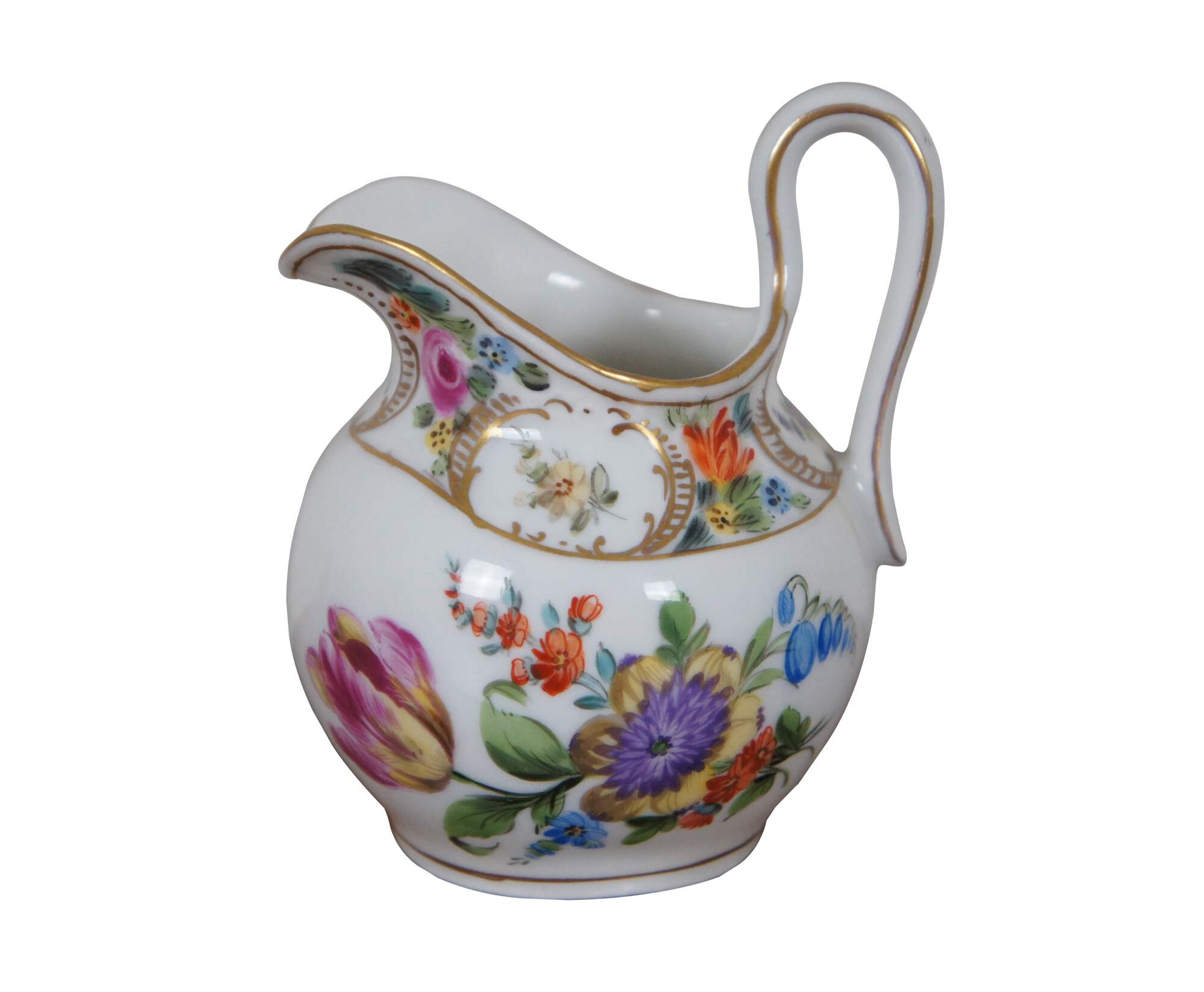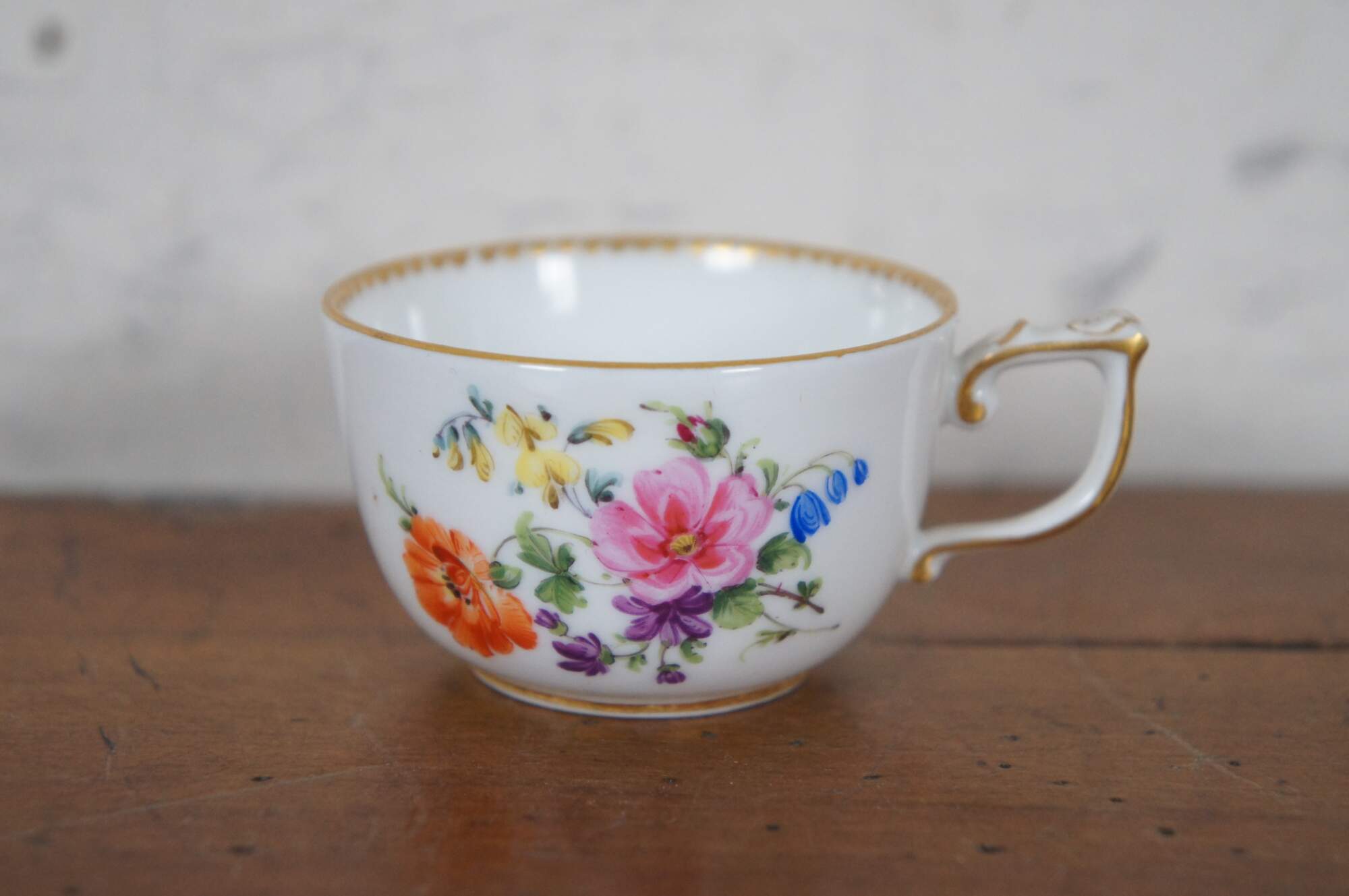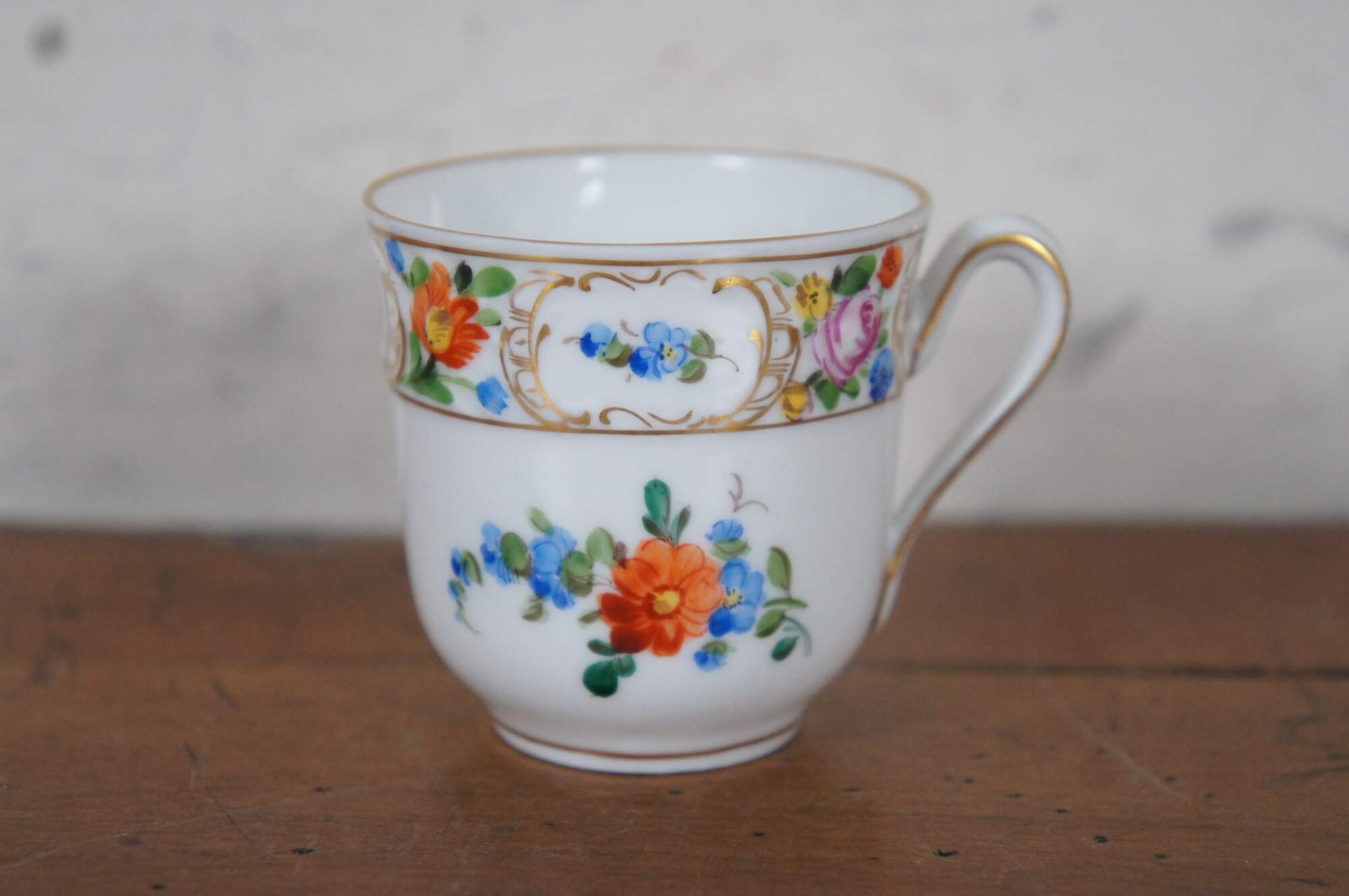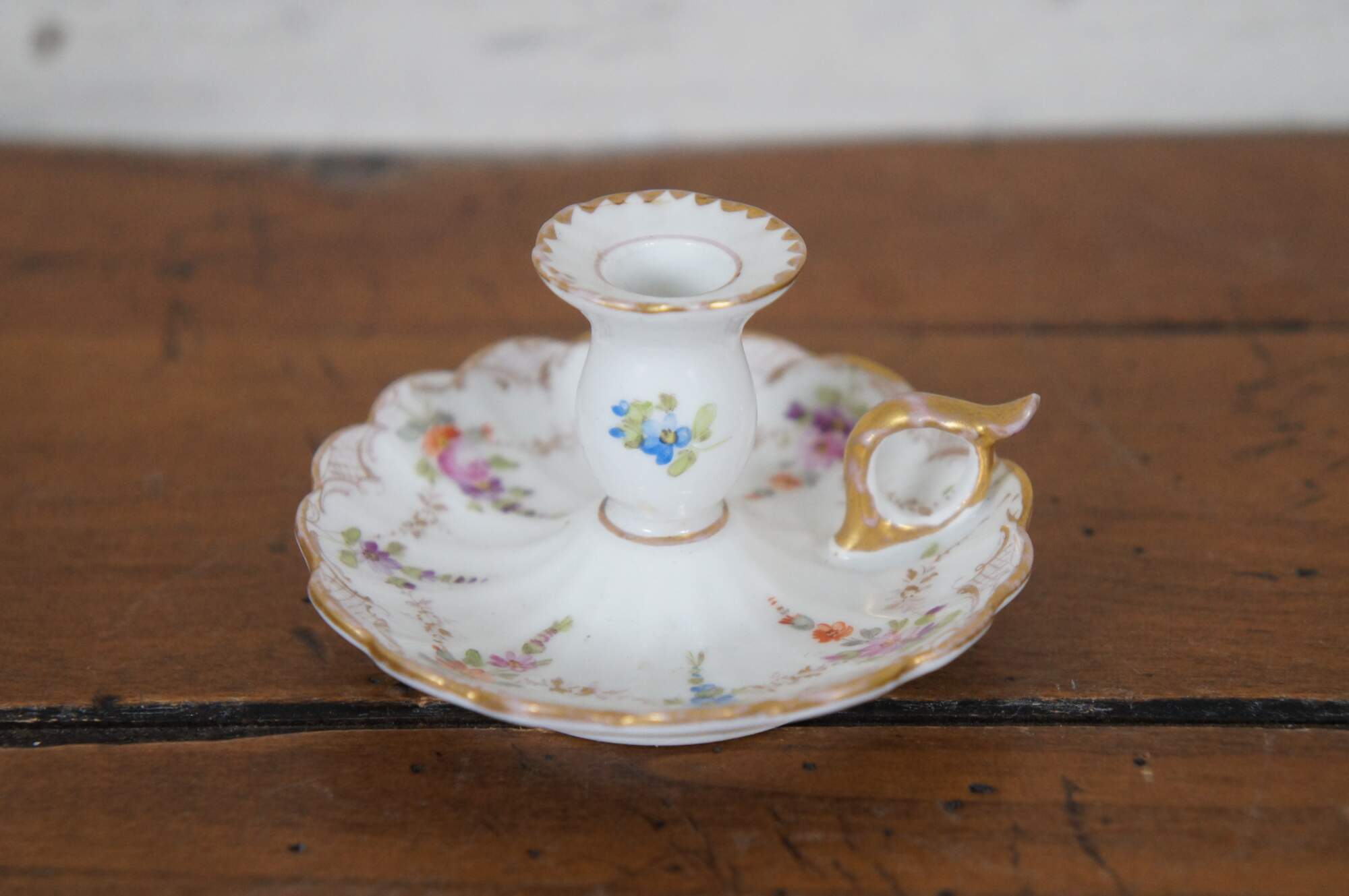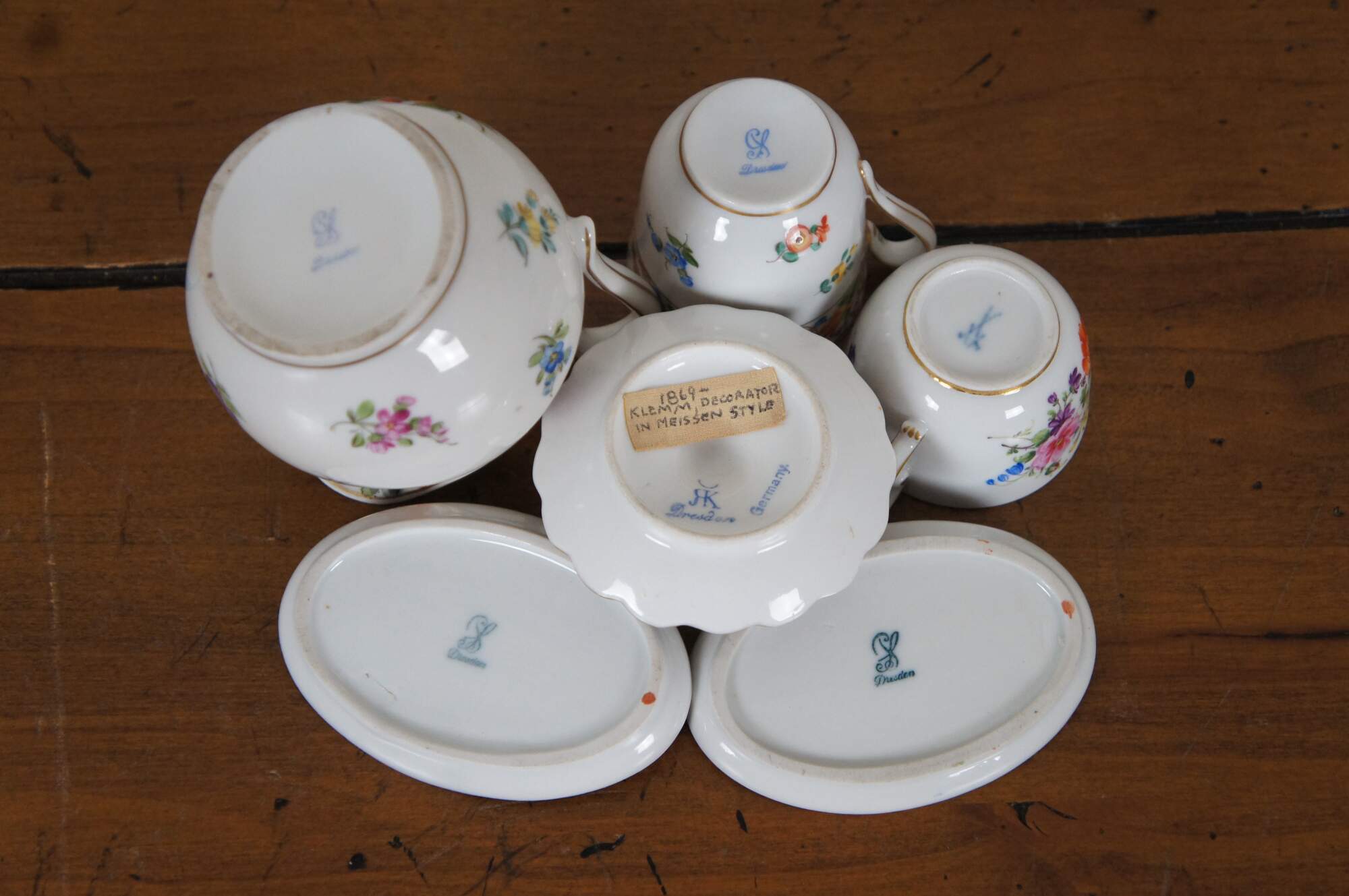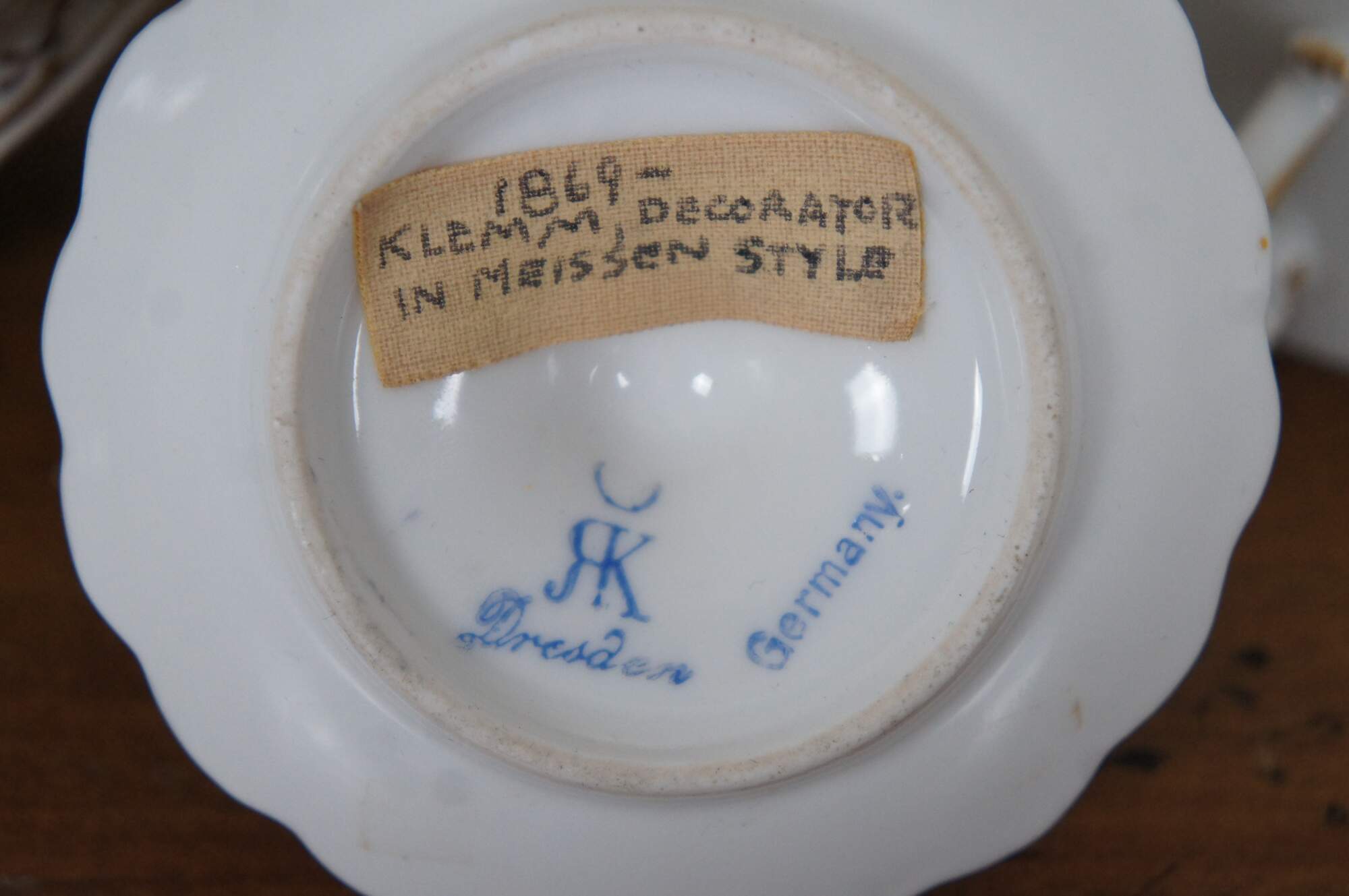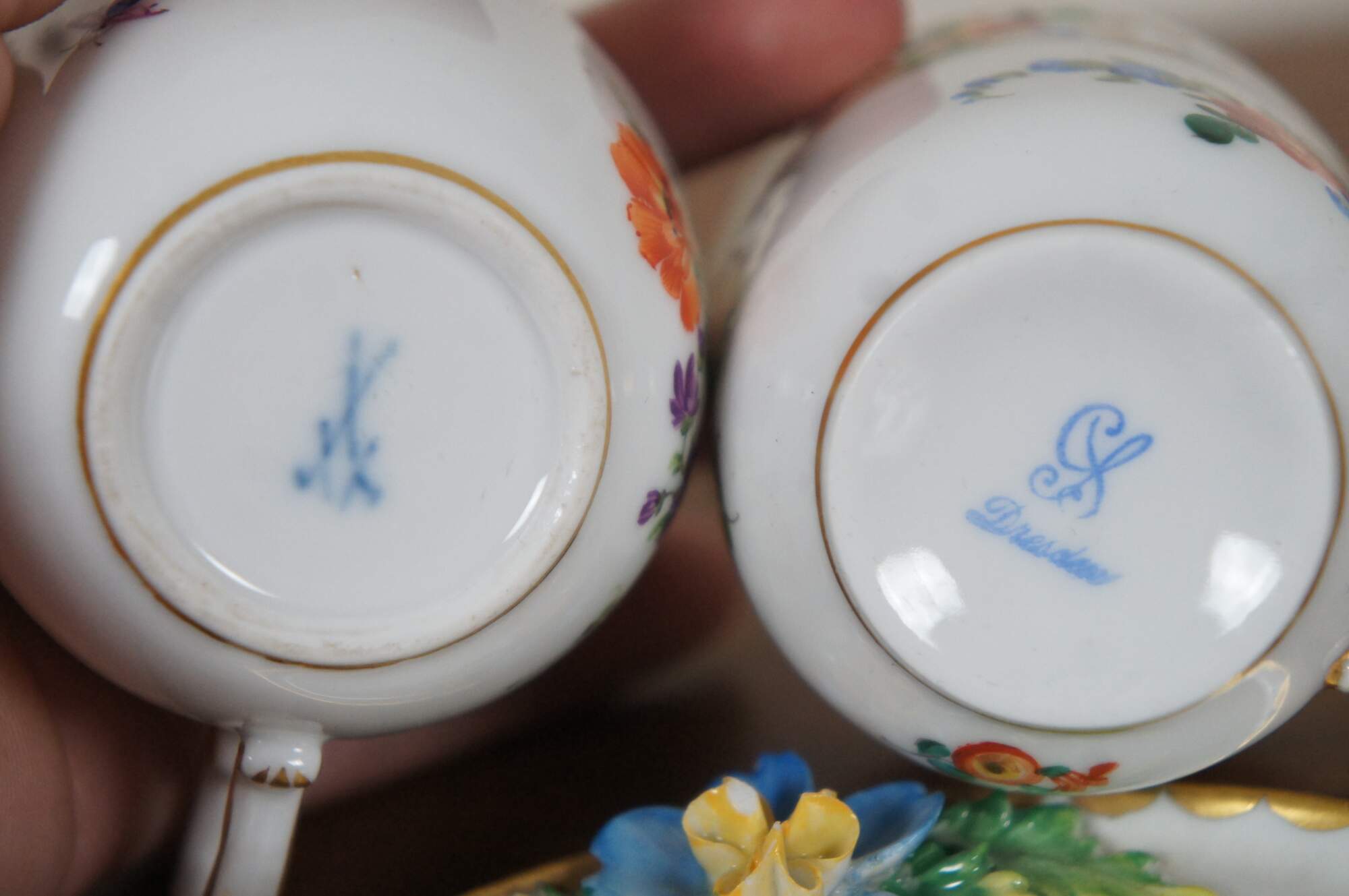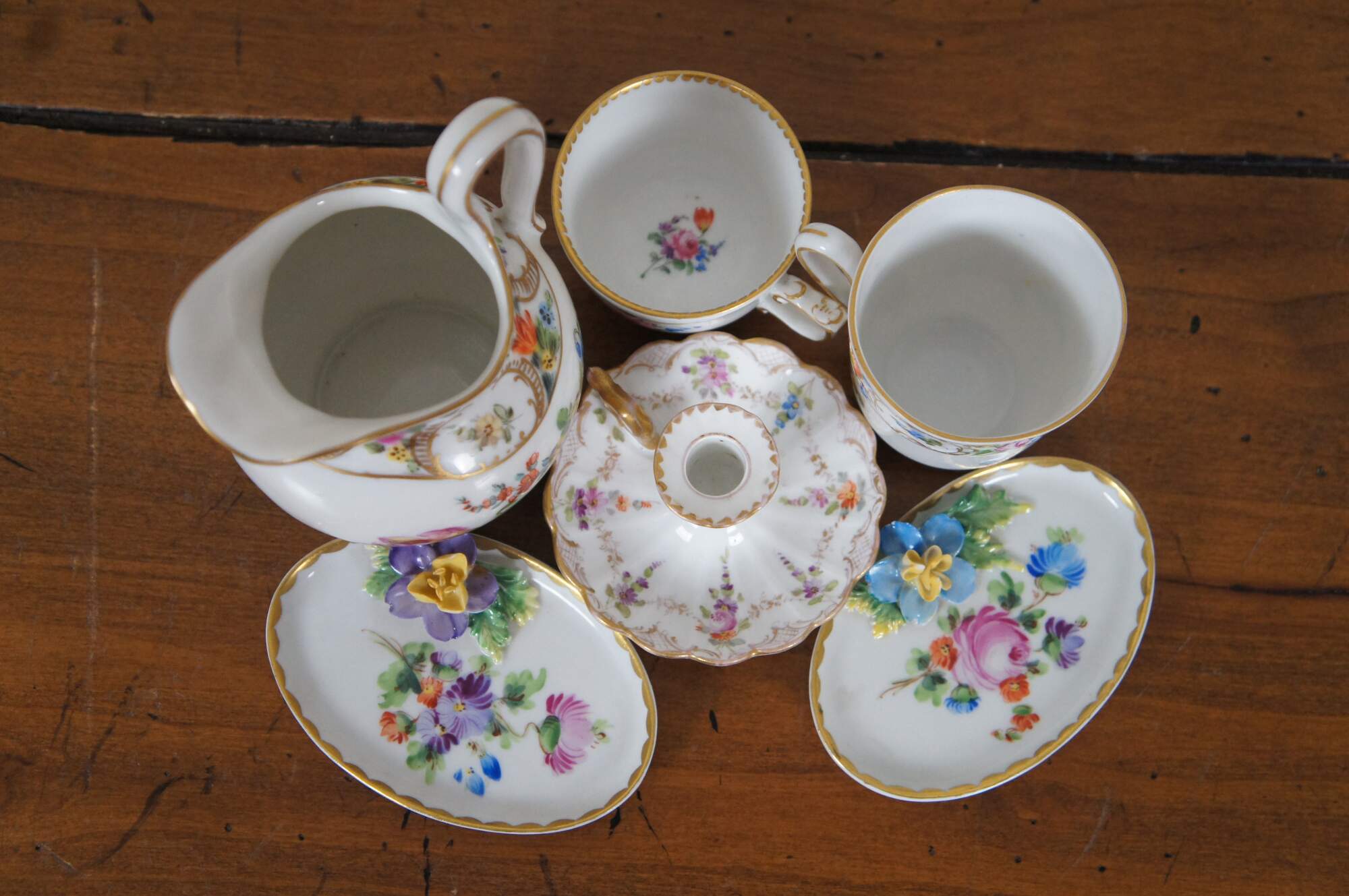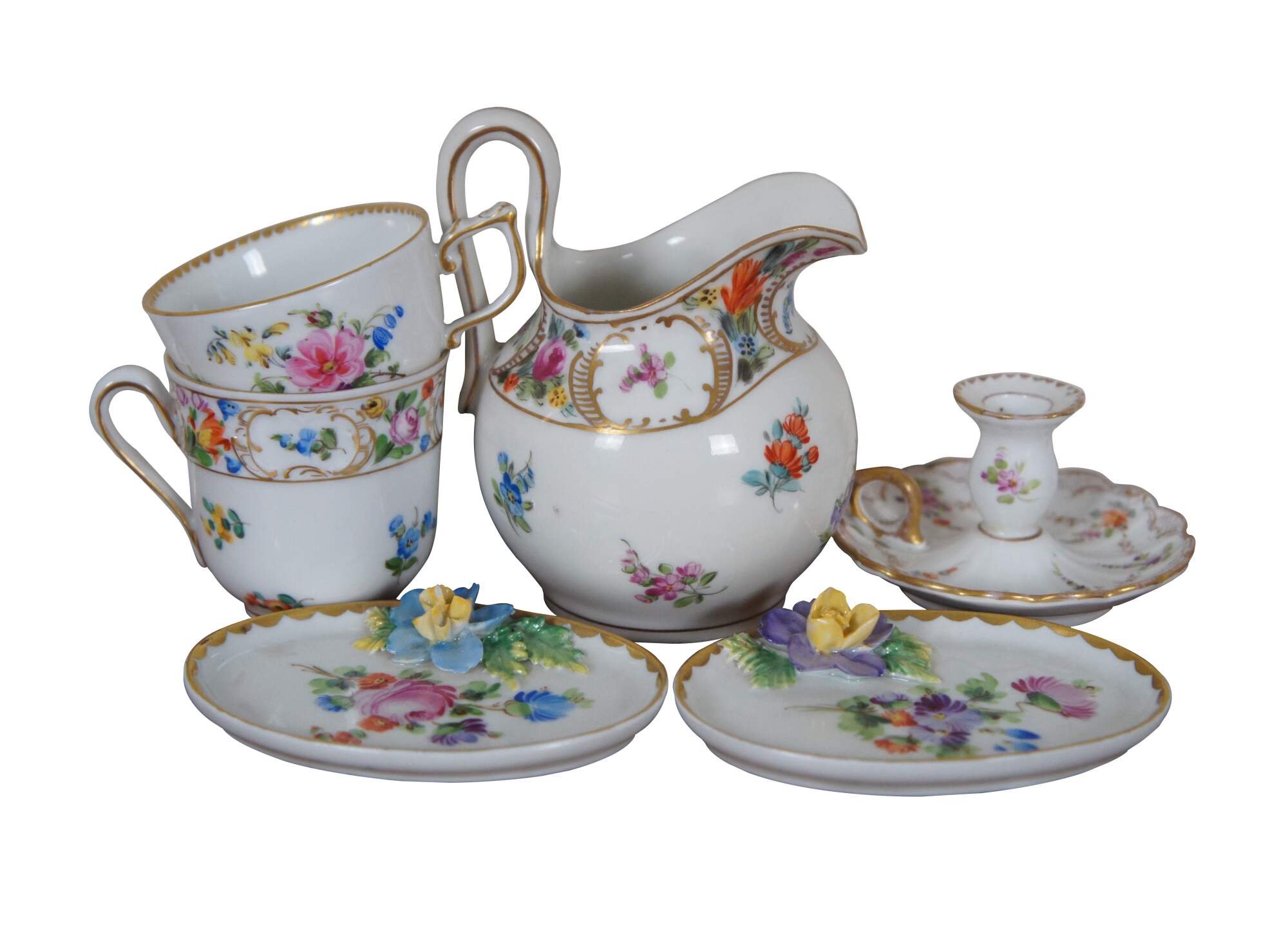
6 Antique German Dresden Meissen Klemm Carl Thieme Pitcher Tea Cups Plates
$240.00
Shipping:
Free Shipping Included
Delivery:
Estimated 2-15 Business Days
Payments:
Credit Card, Check, Cash, PayPal, Apple Pay, Venmo
Returns:
30 Days 100% Money Back Guarantee, Buyer Pays Return Shipping
Description
Antique lot includes creamer, demitasse cup, and two bone dishes by Dresden, one demitasse cup by Meissen, and one candlestick by Klemm.
“The Sächsische Porzellan-Manufaktur Dresden GmbH (Saxon Porcelain Manufactory in Dresden Ltd), generally known in English as Dresden Porcelain, is a German company for the production of decorative and luxury porcelain. Founded in1872, it is located in Potschappel, a suburb of the town of Freital in the Sächsische Schweiz-Osterzgebirge district about 8 km (5 mi) southwest of Dresden, the capital of Saxony. Dresden Porcelain introduced its blue "SP Dresden" trademark in 1902.”
"Meissen porcelain or Meissen china was the first European hard-paste porcelain. Early experiments were done in 1708 by Ehrenfried Walther von Tschirnhaus. After his death that October, Johann Friedrich Böttger continued von Tschirnhaus's work and brought this type of porcelain to the market, financed by Augustus the Strong, King of Poland and Elector of Saxony. The production of porcelain in the royal factory at Meissen, near Dresden, started in 1710 and attracted artists and artisans to establish, arguably, the most famous porcelain manufacturer known throughout the world. Its signature logo, the crossed swords, was introduced in 1720 to protect its production; the mark of the swords is reportedly one of the oldest trademarks in existence. Meissen remained the dominant European porcelain factory, and the leader of stylistic innovation, until somewhat overtaken by the new styles introduced by the French Sèvres factory in the 1760s, but has remained a leading factory to the present day. Since 1991, the manufactory has been operating as the Staatliche Porzellan-Manufaktur Meissen GmbH,[2] whose owner is the Free State of Saxony. The company is one of the world's leading porcelain manufacturers and one of the oldest and most internationally known German luxury brands."
"Karl Richard Klemm founded a porcelain decorating studio in Striesen bei Dresden in 1869. The porcelain was obtained primarily from the Meissen factory itself, much of it being seconds. The decorating style of Richard Klemm closely matched that of the Meissen factories at that time. He often used a heavily applied style that focused on florals. In many instances, the porcelain pieces of Richard Klemm are emblazoned with a gold leaf at the base. This gold leaf was used to hide the marks made by the original manufacturer of the blanks that he used for decorating. Richard Klemm, along with Helena Wolfsohn, Karl Thiem, Ambrosius Lamm and Donath & Co., were among the most sought after porcelain decorating studios at this time. In the early 1880's Richard Klemm registered his mark, the "Klemm Dresden Crown", as design No 24, at the Reichs-Warenzeichenregister, or RWZR, which was the central office for registering of all porcelain trade names and marks. He merged his company with the studio of Donath & Co. in 1916. However the merged companies were subsequently purchased in 1918 by Hutschenreuther.
Condition
Good Overall - Gentle wear
Dimensions
Creamer - 3.5" x 3.25" / Demitasse - 3" x 2.25" x 1.5" (Width x Depth x Height)
